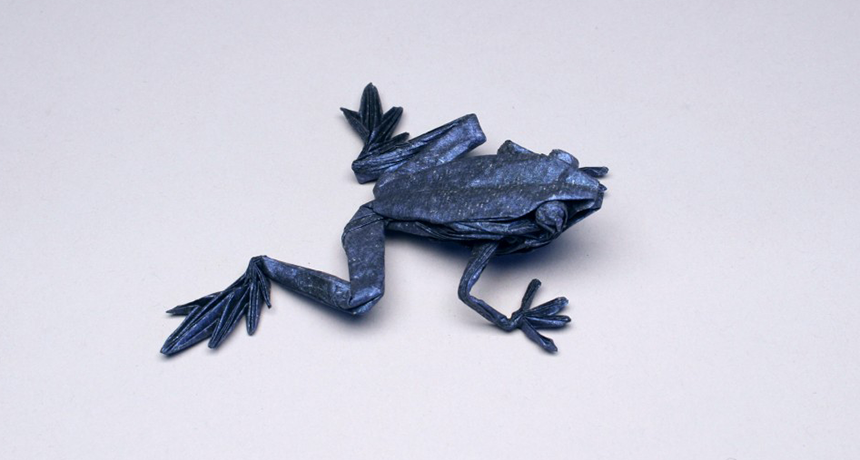Questions for ‘Cool Jobs: The art of paper folding is inspiring science’

Robert Lang folded this 2011 sculpture — Poison Dart Frog HP, Opus 598 —from a single sheet of paper. Artists have worked with this type of paper-folding, known as origami, for centuries. Recently, some scientists have found use for this technique in their research.
Artist Robert J. Lang